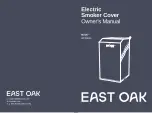
Planning
ASD 531, Technical description, T 140 416 en
41 / 105
4.5
Equipment monitoring
4.5.1
Equipment monitoring applications
Equipment monitoring applications using the ASD 531 are additional monitoring applications to space surveillance. Equipment
monitoring directly involves monitoring an object (machine, device or equipment). The following objects are typical examples of
an ASD 532 monitoring:
•
Electrics cabinets with or without forced ventilation
•
EDP computer systems and cabinets with or without ventilation
•
Devices and machines in production technology
•
Transmitting installations / transmission facilities
•
Vacuum cupboards in the chemical industry (air recirculation), subject to prior consultation with the manufacturer.
4.5.2
Principles of equipment monitoring
Notice
Equipment monitoring is subject to the following principles:
•
The country-specific application guidelines must always be adhered to.
•
In equipment monitoring it preferable to use Classes A and B compliant with EN 54-20.
•
Equipment monitoring applications using the ASD 531 are additional monitoring applications to space surveil-
lance.
•
Planning with
the “ASD PipeFlow” calculation software is necessarily
. This guarantees optimal detection
behaviour and ensures that the technical system limits are optimally utilised.
•
Symmetry is not required for equipment monitoring.
•
Unlike space monitoring, which involves individual sampling holes, equipment monitoring involves the use of
sampling fixtures
with several sampling holes.
•
The
sampling fixture
is defined as a small pipe entity in the shape of an „I”, „U”, „T”, „H” or other form with
typically 2 to 4 sampling holes.
•
The sampling fixtures are arranged in such a way relative to the object that they intake the air outflow (ventila-
tion slot or screen). Ideally the sampling holes are distributed symmetrically on each sampling fixture over the
surface of the opening / screen.
•
On objects with a high air-flow rate (strong ventilation), the sampling holes can be fitted with SF ABS sampling
funnels for optimal smoke detection.
•
The systems should be formed in such a way that false alarms are avoided.
















































